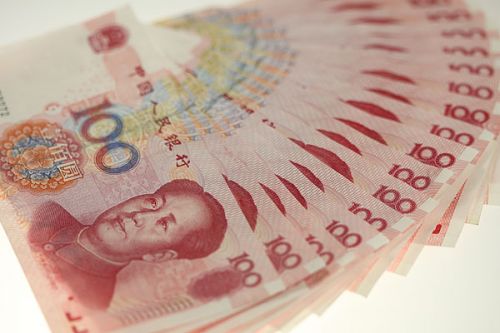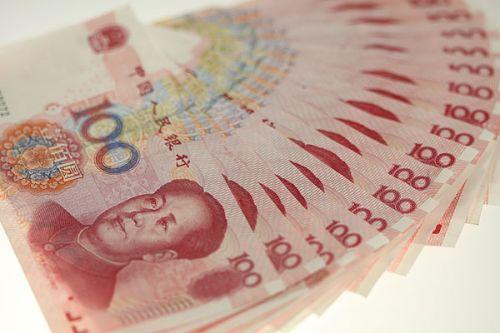
BEIJING, June 15 (Xinhua) -- China's central bank remained firm on its monetary policy stance, unmoved by the United States Federal Reserve rate hike, after months of precautions preparing its financial system for the impact.
China's financial markets remained calm Thursday, after the Fed announced the widely-anticipated quarter-percentage-point increase in the benchmark interest rate, the second hike this year.
The benchmark Shanghai Composite Index edged up 0.06 percent to close the day at 3,132.49 points.
Interest rates for the central bank's reverse repo operations were left unchanged Thursday. The rates went up 10 basis points hours after the Fed's rate hike in mid-March.
Unlike mid-March, China's money market rates are now much higher, economic growth has shown signs of moderation and the yuan is stronger, reducing the necessity for China to follow the Fed's move, said Ren Zeping, chief economist at Founder Securities.
PRUDENT, NEUTRAL
On Thursday, the People's Bank of China (PBOC) pumped a net 90 billion yuan (13.25 billion U.S. dollars) into the financial system via reverse repos to ease a liquidity strain caused by tax payments and maturing reverse repos.
The rate for the seven-day reverse repos remained at 2.45 percent, the 14-day rate stayed at 2.6 percent and the 28-day rate was unchanged at 2.75 percent, the PBOC said on its website.
As China shifted to the prudent and neutral monetary policy, the central bank has left the benchmark interest rates on hold, and used expanded policy tools to manage liquidity.
Rates for the reverse repos and medium-term lending facilities have gone up several times this year, accompanying China's efforts to contain leverage and financial risks.
The deleveraging campaign revved up in recent months with tightening scrutiny against risky financing and shadow banking. It has pushed up interbank money rates and added pressure on a liquidity strain usually seen in June, as companies have to pay taxes and banks scramble for funds to meet quarter-end health checks.
In Thursday's interbank market, the one-year Shanghai Interbank Offered Rate (Shibor), a key indicator of interbank borrowing costs, edged up to a more-than-two-year-high of 4.4264 percent.
Shibor for one-month loans rose 1.2 basis points to 4.6946 percent, also the highest level in more than two years.
Analysts said if China followed the Fed, the country's financial sector, which is already grappling with a credit strain and higher funding costs, would be further squeezed.
However, Northeast Securities said in a report that the possibility of following suit in the second half of the year should not be ruled out with another Fed rate hike widely expected within 2017.
Hours before the Fed's decision, the PBOC said it will continue to push forward financial deleveraging while managing the "strength and pace" of its policies to stabilize market expectations, and striking a balance between deleveraging and stable liquidity.
YUAN STRENGTH
After the Fed's rate hike, the central parity rate of the yuan strengthened 87 basis points to 6.7852 against the dollar Thursday.
The recent appreciation of the yuan has changed expectations of its weakening. Measured by the central parity rate, the yuan has appreciated 2.24 percent so far this year, with more than half of that seen in the past month.
Under China's market-based, managed floating exchange rate regime, the yuan can rise or fall by 2 percent against the dollar from the central parity rate each trading day. The central parity rate is a weighted average of quotes from dealer banks, and follows a formula of previous day's closing rate and changes in a basket of currencies.
To curb swings on the forex market, China announced a plan in late May to add a "counter cyclical factor" into the pricing formula of yuan-dollar central parity rate.
Analysts considered the "counter cyclical factor" one of China's precautionary measures for the Fed's rate hike.
It remains unclear how and when the "counter cyclical factor" will be used, or whether it has already been implemented.
Given the weakening of the greenback, reduced capital outflows from China, and ongoing pressure from China's major trade partners, UBS economist Wang Tao expected the yuan to stay relatively strong against the dollar for the rest of the year.
STABLE SOFTENING
Despite emerging downward pressure, China's economic growth remained stable this year, enabling policy makers to maintain the prudent and neutral monetary stance.
Although the stance will remain unchanged, Ren Zeping expected no further tightening in the second half of the year as growth may have already peaked. "The monetary policy will be likely to be neutral with an easing bias."
Fresh data showed China's employment, industrial output, and retail sales all held steady in May, while exports grew faster than expected. However, growth of fixed-asset investment and property development investment slowed, pointing to a slight moderation of growth momentum.
The slowdown is set to be steady, not spiraling, as exports remain robust and the government continues to buoy demand through infrastructure spending, said Tom Orlik, chief Asia economist with Bloomberg.
The Chinese Academy of Social Sciences, a government think tank, expected the economy to grow 6.7 percent, 6.6 percent and 6.5 percent in the second, third and fourth quarter, respectively.
China's GDP expanded 6.9 percent in the first quarter of the year. It targets an annual growth rate of around 6.5 percent for 2017.




 A single purchase
A single purchase









